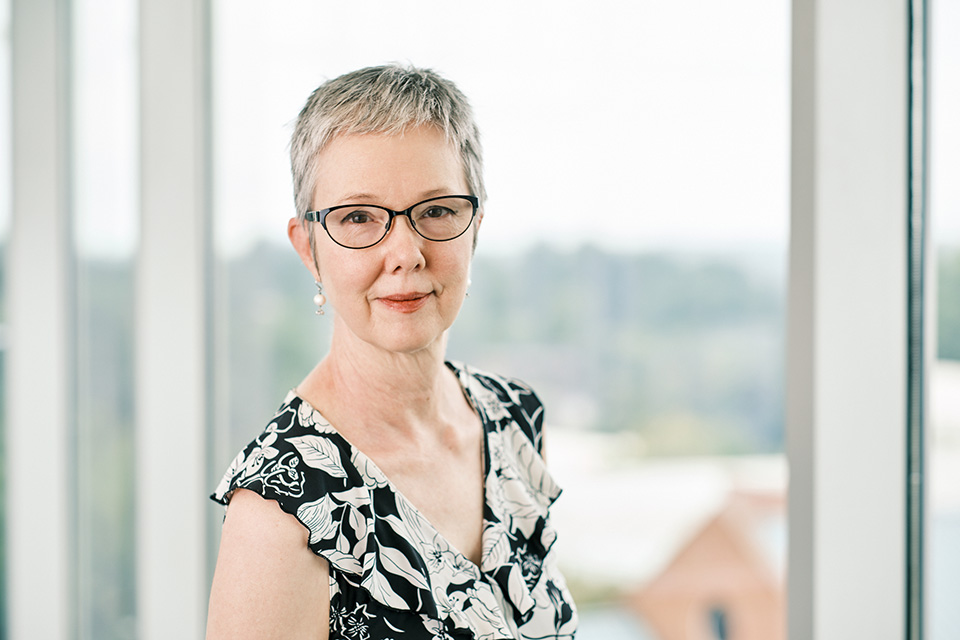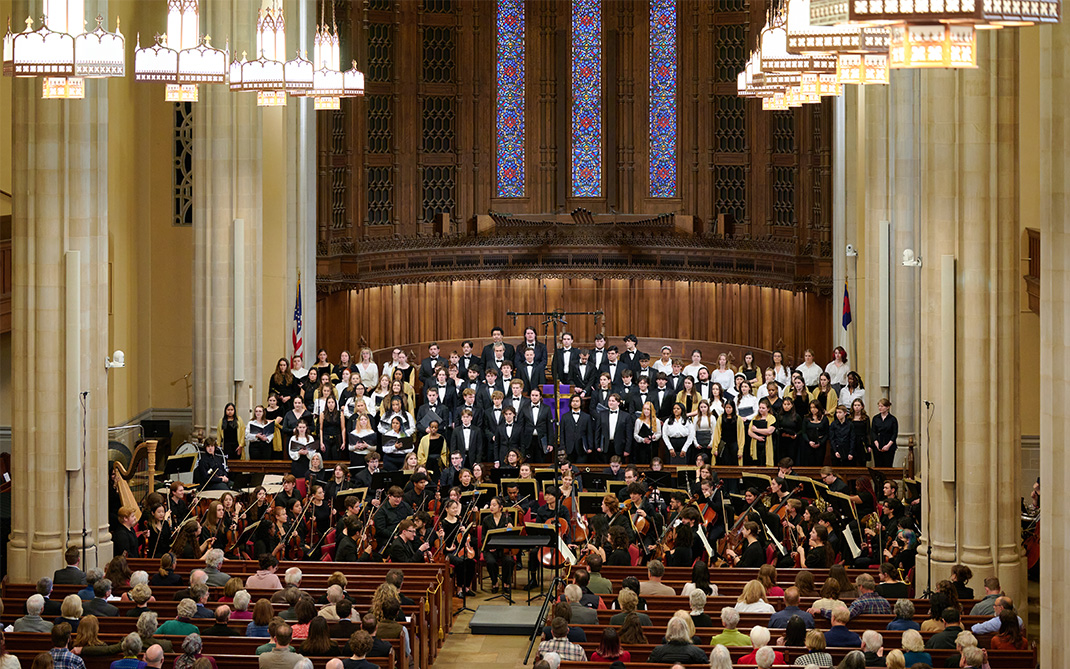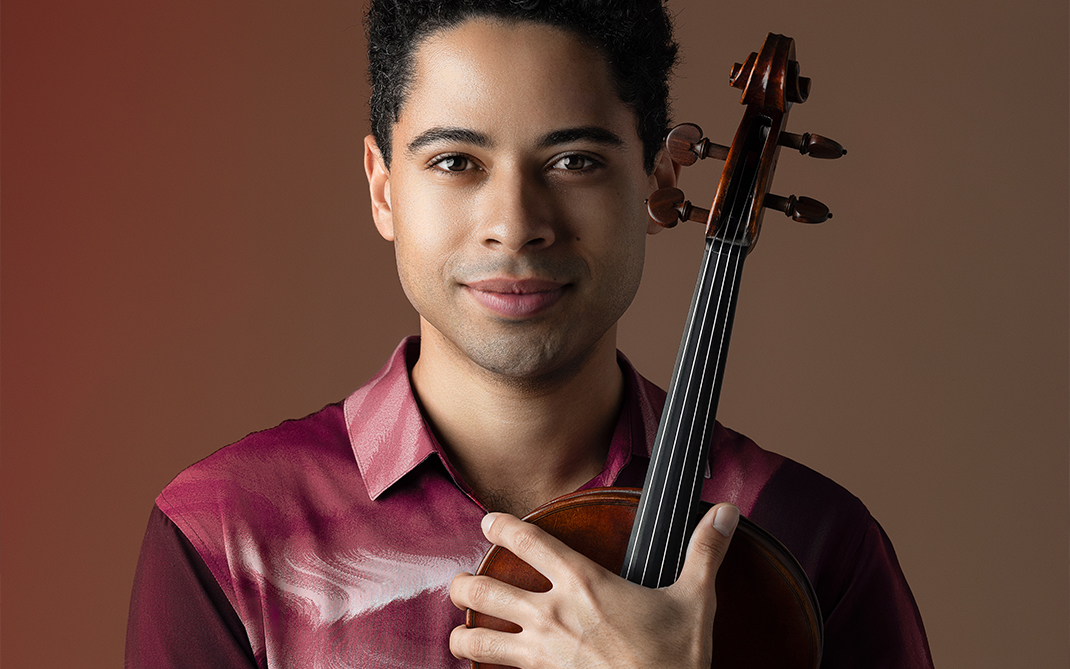School of Dance to present premieres of contemporary works in Fall Dance
The UNCSA School of Dance will showcase premieres of fresh contemporary choreography by a Dance faculty-artist and two guest artists in the annual Fall Dance. Performances are Tuesday-Saturday, Sept. 27-Oct. 1, at 7:30 p.m. and Saturday, Oct. 1, at 2 p.m. in Agnes de Mille Theatre on campus. Tickets are $20 regular, $15 for students with a valid ID.
In “The Bloom of Youth,” Associate Dean of Dance Brenda Daniels will celebrate the beauty, freshness and vivacity of youth in a dance accompanied by a student from the School of Music performing Mozart’s Piano Sonata in F major live onstage. Award-winning, Chicago-based choreographer Mariana Oliveira will bring her distinctive vision to “Dreamland,” a comedy-drama influenced by the surrealist movement, set to songs from the 1930s and ’40s. UNCSA alumnus Anthony Lee Bryant (H.S. Dance ’03), a cast member of the national tour of “Wicked,” is creating a new piece, “Entropy,” influenced by the concept of entropy, the degradation of matter and energy in the universe.
“This year’s Fall Dance centers around joy, youth, and life in bloom,” said Endalyn T. Outlaw, dean of the School of Dance. “We are honored to present a work by our talented faculty-artist Brenda Daniels, as well as multitalented alum Anthony Lee Bryant, and the accomplished Mariana Oliveira. Each of the three works will take us on a stylistically different journey: some filled with humor and whimsy and others with a physically charged movement vocabulary. And all will highlight the artistic and technical skills of our contemporary dancers. Fall Dance will be a truly special experience for both students and audiences.”
Brenda Daniels’ “Bloom of Youth”
The three-part structure of Mozart’s sonata is reflected in the sections of “Bloom of Youth”: “Hothouse,” “Buds” and “In Full Flower.” The cast comprises second-year contemporary students in both high school and college.

Associate Dean of Dance Brenda Daniels
“The outer layer of the costumes will give a nod to the Mozartian era, with hoop skirts and frock coats; but the outerwear will be transparent, so it will also indicate the look of a glass conservatory over the flower-like velvet unitards underneath,” Daniels said. “The outerwear will be worn only for the first movement, ‘Hothouse.’ The second two movements, ‘Buds’ and ‘Full Flower,’ will feature the flower-like unitards.”
The first movement is stately and formal, as if at a palace party, Daniels said. In the second adagio (slow) movement, couples explore burgeoning feelings of love and connection. The final section is a joyous romp to the lively presto movement.
“It is always a pleasure to have music played live onstage, being created at the same moment as the dance is unfolding, Daniels said. “It gives a freshness and immediacy which canned music doesn’t have. It is harder for the dancers, however — they have to be sensitive and adaptable to the little variations in tempo and inflection that occur in live performance.”
Mariana Oliveira’s “Dreamland”
Oliveira’s “Dreamland” is a comedy-drama that portrays the journey of a character blooming and maturing through life, discovering the beauty and adversities, such as love, loss and death.

Mariana Oliveira
“The piece is influenced by the surrealism movement, and the works of visual artist Rafal Olbinski,” Oliveira said. “The soundtrack of ‘Dreamland’ is based on the songs of artists from the 1930s and ’40s, such as Xavier Cugat, Rudy Valleé, Charlie Chaplin, and Tommy Dorsey.”
The surrealist art movement developed in Europe after World War I. Hallmarks of surrealism include illogical scenes or funny situations that defy logic and allow the unconscious mind to break through and express itself. One surrealist artist, René Magritte, expressed it this way: “If the dream is a translation of waking life, waking life is also a translation of the dream.”
Originally from Brazil, Oliveira studied at the Royal Academy of Dance in London and was a trainee dancer at the National Dance Company of Wales. She has created new works for the New York City Ballet Choreographic Institute, Joffrey Ballet Winning Works, Kansas City Ballet, Carolina Ballet, BalletX, Ballet Memphis, and Richmond Ballet, among others.
Anthony Lee Bryant’s “Entropy”
Bryant’s “Entropy” was inspired by ideas in the book “Enlightenment Now,” by Steven Pinker.
“In the book, he speaks about entropy, and I found his writings on the ideas behind the second law of thermodynamics intriguing,” Bryant said. The second law of thermodynamics states that as energy is transferred or transformed, more and more of it is wasted.

Anthony Lee Bryant (H.S. Dance ’03)
"When energy is poured into a system, and the system dissipates that energy in its slide toward entropy, it can become poised in an orderly, indeed beautiful, configuration — a sphere, spiral, starburst, whirlpool, ripple, crystal or fractal," Pinker writes.
The tone of the piece will use varying states of energy and formations in juxtaposition with one another to showcase the physicality and virtuosity of the dancers, Bryant said. Dispersing bodies in space through time into gatherings of clumps or clusters represents ideas of entropic states of being.
“My hope is that the audience will enjoy the piece's nuances and learn to appreciate different aspects of movement within one piece of creation,” Bryant added.
Get the best news, performance and alumni stories from UNCSA.
SUBSCRIBE TO OUR NEWSLETTERS(OPENS IN NEW TAB)(OPENS IN NEW TAB)(OPENS IN NEW TAB)
September 07, 2022




